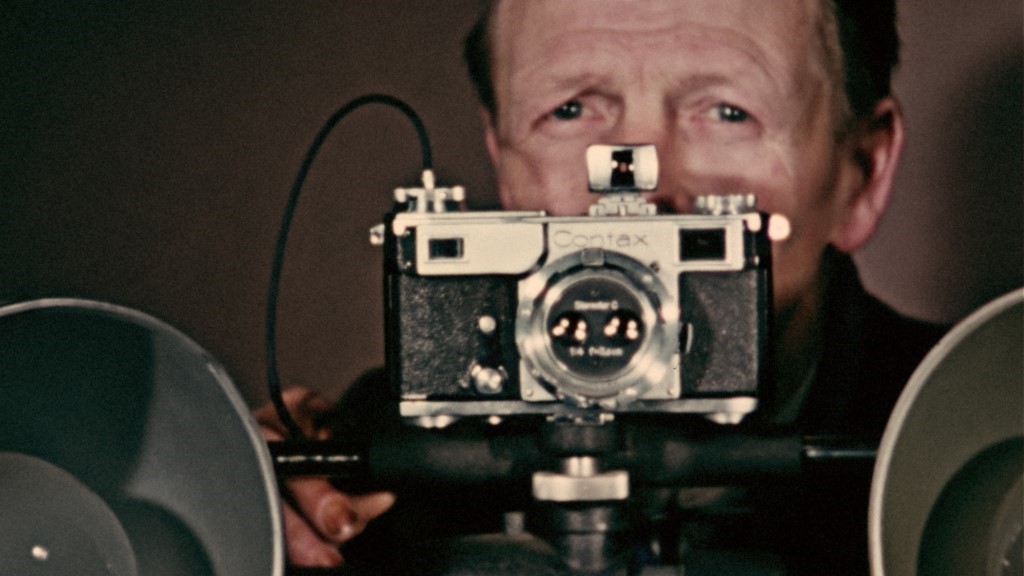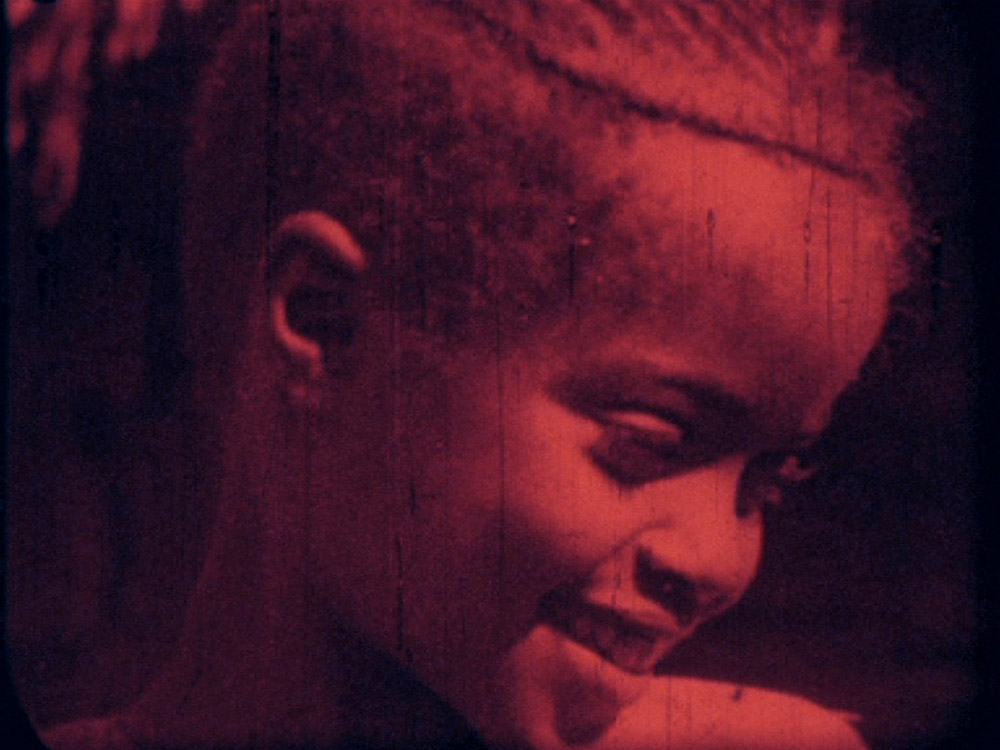16 mm, 13′

Peter Kubelka
Unsere Afrikareise (Our Trip to Africa)
1966
Unsere Afrikareise, referred to as “one of the most powerful and insightful cinematic exposés of colonialism” (MacDonald, 2004) demonstrates how the cinematic language can be a powerful tool for critique. Austrian experimental filmmaker Peter Kubelka was hired by the group of wealthy Austrians to make a film footage of their hunting trip to Sudan, via Yugoslavia. The trip was not the journey of desire, but the reflection of a particular social structure, prone to hunting as a desirable activity: “they didn’t really want to travel. They didn’t really want to see people different from themselves” (Kubelka stated in an interview, MacDonald, 2004). The precision in his editing technique made the film suggestive and exposed the frustration with the colonising mentality of his travelling companions i.e. “the colonialist racism of the Austrian businessman” (MacDonald, 2010).

Jelena Jureša
Aphasia
2019
DCP, 80′
Aphasia is a feature-length film essay dealing with the politics of memory and oblivion inscribed in social and historical contexts. As a medical term, aphasia refers to the inability to speak or to find the right words. In three chapters Aphasia detects a thread of positions of power, racism, injustice and violence from Belgian colonialism, Austrian anti-Semitism and atrocities in Bosnia during the Yugoslavian wars. The film is exploring how collective crimes keep being repeated and reflects social and political constellations, unfolding constructions behind nation-states and national identities. The media are not shown as mere silent witnesses to a twisted worldview, but as active instruments in preparing and executing different crimes against humanity.

Nebojša Slijepčević
Srbenka
2018
DCP, 72′
Srbenka examines how the generation born after the Yugoslavian wars copes with the dark shadows of history. Although the bloody skirmishes ended 20-something years ago, for many Croats the noun ‘Serb’ is still the synonym for ‘the enemy’ (Slijepčević). In early 90’s, a 12-year old Serbian girl was brutally murdered in Zagreb. The perpetrators were soon found but never convicted. A quarter-century later, well known stage director Oliver Frljić is working on a theatre play about the case. The rehearsals bring out hidden traumas and become collective psychotherapy, and the 12-year old actress Nina feels as if the war had never ended. Why are such young children even aware of their ethnicity? Why must they hide their origins? The film zooms in on the sometimes distressing discussions and conversations that take place during rehearsals. The participants all have their own history, their own perspective on the war and the present day. They share their stories in voice-overs accompanying shots of an empty stage. We see nothing of the performance itself, which creates a sense of distance between the theatrical reality of the characters and the struggles of the dramatists. The process they are going through is one that Croatia as a nation still needs to experience.

Sarah Vanagt
History Lesson
2005
Video, 5′
April 2004. A teacher in a primary school on the edge of Lake Kivu talks to the children about the word “itsembatsemba itsembabwoke”. History Lesson is also part of the longer documentary film Begin Began Begun.

Alexander Kluge
Brutalität in Stein (Brutality in Stone)
1961
35 mm, 12′
In 1960, Kluge co-directed his first short film with Peter Schamoni entitled Brutality in Stone, a poetic montage film reflecting on the notion that the past lives on in architectural ruins; that the ruined structures of the Nazi period in particular bear silent witness to the atrocities committed. This film is important for a number of reasons: Brutality in Stone marks the beginning of a process in which German filmmakers of the 1960s and 1970s began to overturn the apparent amnesia German cinema had demonstrated during the 1950s in regard to the Nazi period. In addition, the film was premièred at the annual Oberhausen short film festival in February 1961. The festival was significant because it functioned as a forum for young and experimental film makers attempting to develop modes of cinematic practice outside the rigid, commercial framework of the industrial system – modelled on Hollywood – that had been set up with the assistance of the American occupying forces in the immediate post-war period. A year after the première of Brutality in Stone at the Oberhausen festival, Kluge was one of the authors and signatories of the ‘Oberhausen Manifesto’, a document that outlined the imperatives of bringing a new kind of German cinema into being. (Michelle Langford, Senses of Cinema)

Kurt Kren
Schatzi (Honey)
1968
16 mm, 2′
In 1968 Kren made Schatzi, which explores the irony of a formal image device, the interplay of positive and negative superimposition, involving the viewer in the material interaction only to reveal finally that the picture is of an army officer surveying a field of corpses. In many respects, Kren´s work continues to express the tension between the existential and the structural. His formal inclinations and systematic structures never become formalist or formula unrelated to the existential aspect of image. (Malcolm Le Grice, “Abstract Film and Beyond”, 1977)

Igor Grubić
How Steel Was Tempered
2018
DCP, 12′
A father takes his son to an abandoned factory where he once worked. The building has long been reduced to a crumbling symbol of the new system. Nonetheless, the space will briefly be brought to life by recorded scenes of workers solidarity, inspiring a small gesture of defiance. That symbolic act will turn into a moment of catharsis and re-establish the relationship between the father and son.

Kader Attia
Reflecting Memory
2016
HD video, 48′
This cinematographic poem presents interviews with surgeons, neurologists and psychoanalysts on the phenomenon of the “phantom limb”, the sensation that a missing part still remains connected to the body, following physical amputation and subsequent hallucinosis. The most likely cause of this condition can be located in the so-called “mirror neurons”, which send impulses in response to mimetic desire (René Girard) and are specific to human beings. Beyond the scientific and political relevance of the inquiry, the work offers a journey through mimetic and hybrid phenomena, such as dub music (a genre that originated in Jamaica and is based on the subtraction of sounds). Referencing both intimate and collective injuries, material and immaterial symptoms, the film expands beyond physical and individual amputation, harking back to the ghosts of contemporary history (slavery, colonialism, communism and genocide) and their demands for repair.

Yervant Gianikian and Angela Ricci Lucchi
Pays Barbare (Barbaric Land)
2013
DCP, 65′
In Barbaric Land, Angela Ricci Lucchi and Yervant Gianikian ask, ‘What is fascism?’ How is it born, how is it rooted, and what unites its different strains? “We pore over material relating to Italian colonial Ethiopia (Abyssinia), recently unearthed in a private film archive. We scour those individual film frames of colonialism, studying them with a magnifying lens, and transcribe the captions. The material was intended for private home viewing, in silence. In these filmic fragments, examined by hand, without a projector, are indications of who owned the films, those sequences to which they returned over and over. Ours is a dual reading, that of the images themselves and the way in which they were consumed. An Ethiopian woman on her knees wearing a top that leaves her breasts bare, a bearded soldier who washes her head symbolically: certain words recur in the captions, such as barbaric, primitive, pillager, bigamy. Among the films we find a number of military sequences showing the violence of the Italian venture to conquer Ethiopia and the phrase: ‘Civilization now dawns in this primitive and barbaric country’. These constitute an image of Mussolini in Africa: a message to the masses via his physical attributes, a unique, unequaled icon.” (Yervant Gianikian & Angela Ricci Lucchi)
